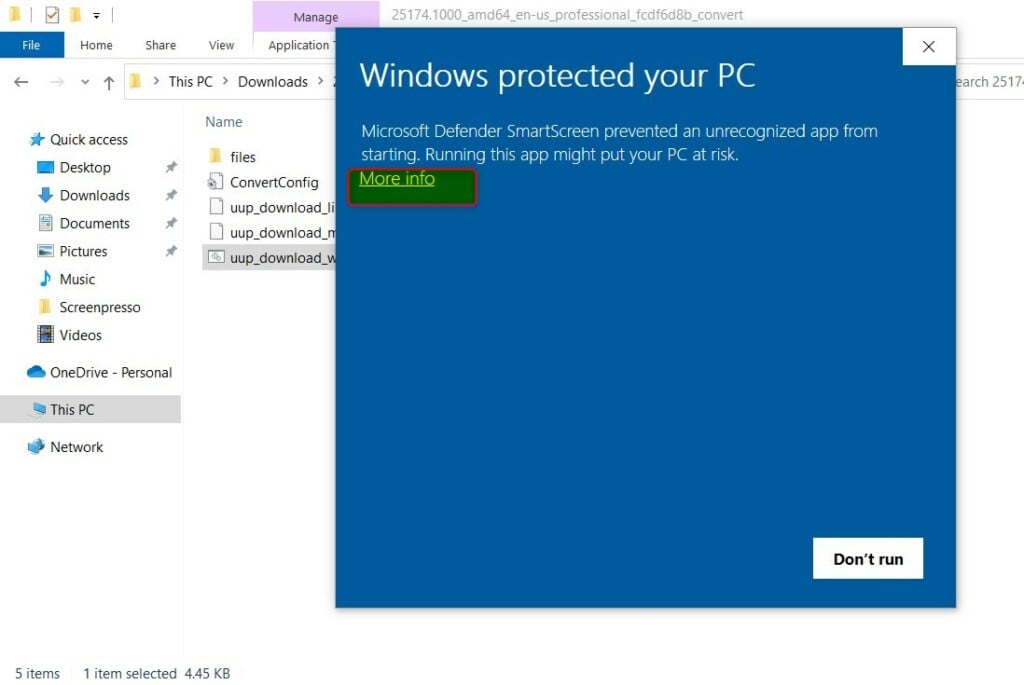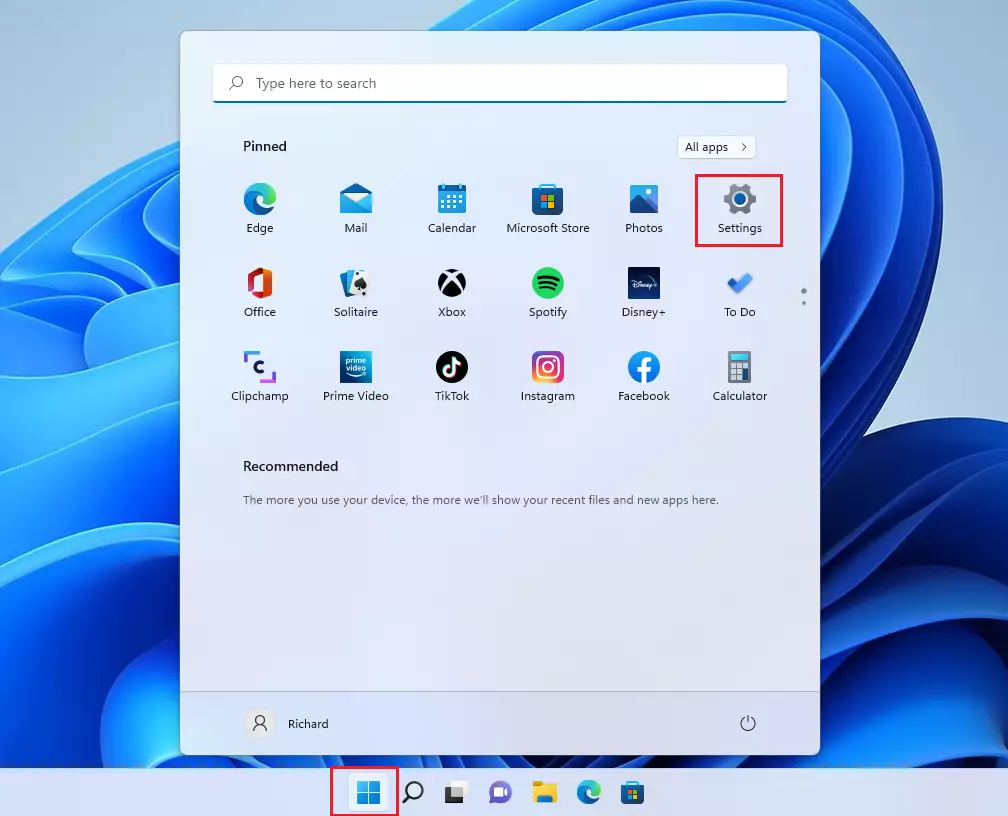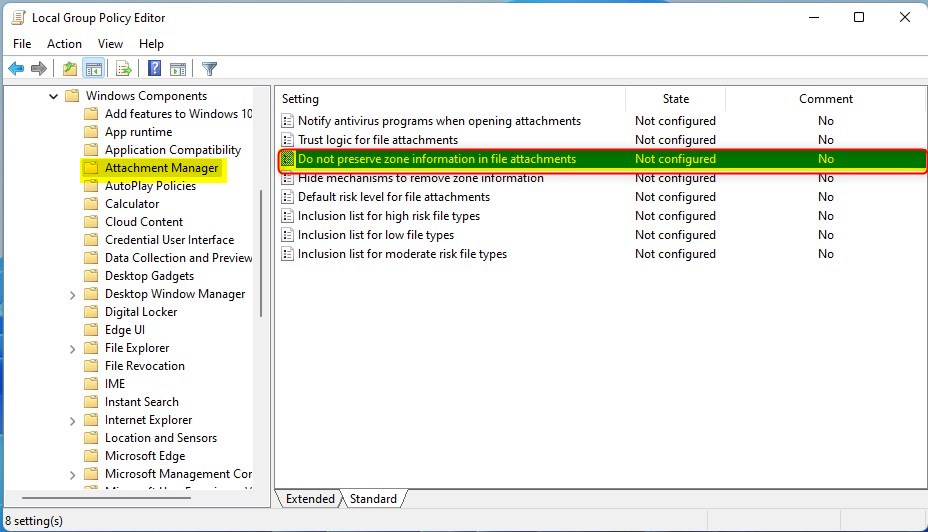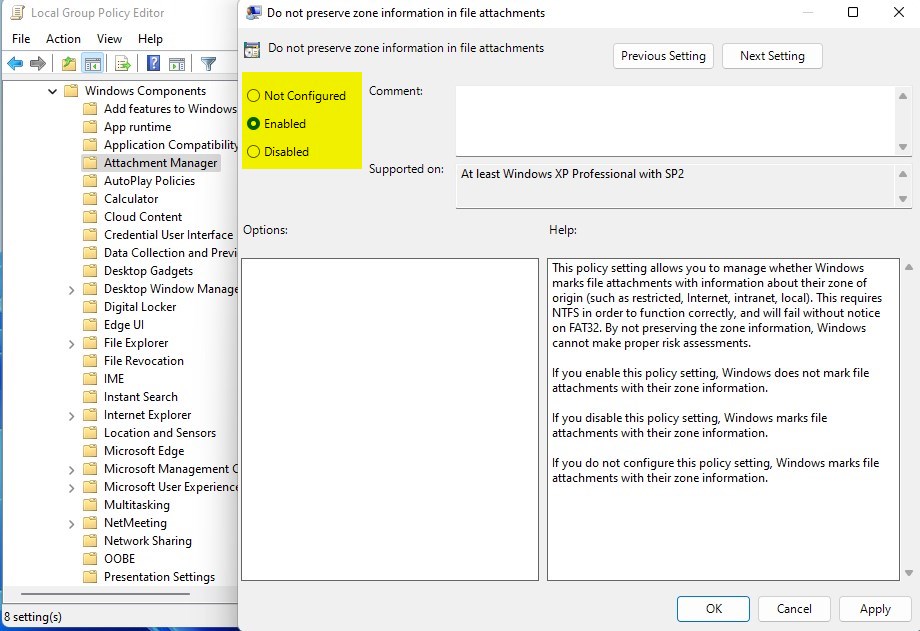This post describes steps to enable or disable the Windows attachment manager that blocks files downloaded from the Internet to your computer.
The Attachment Manager in Windows helps protect your computer from unsafe attachments that you might receive with an e-mail message and from unsafe files that you might save from the Internet.
If the Attachment Manager identifies an attachment that might be unsafe, it prevents you from opening the file or warns you before you open the file.
In Windows, you might get a warning that Windows protected your PC.
Attachment Manager classifies file types as high, medium, and low.:
- High Risk
If the attachment is in the list of high-risk file types and is from the restricted zone, Windows blocks the user from accessing the file before accessing the file. - Moderate Risk
If the attachment is in the list of Moderate Risk file types, Windows will not prompt the user before accessing the file, regardless of the file’s zone information. - Low Risk
If the attachment is in the list of low-risk file types, Windows will not prompt the user before accessing the file, regardless of the file’s zone information.
If your computer is unnecessarily blocking sound files and slowing down your work, you can disable the blocking of files entirely.
How to disable or enable blocking files from the Internet in Windows 11
As mentioned above, Attachment Manager in Windows helps protect your computer from unsafe attachments you might receive with an e-mail message and from unsafe files you might save from the Internet.
The Do not preserve zone information in file attachments policy tells whether Windows marks file attachments with information about their zone of origin (such as restricted, Internet, intranet, local).
If enabled, this policy will effectively disable downloaded files from being blocked.
Example window of the file being blocked:

Click on the More info link for a workaround on running the file anyway.

Below is how to disable or re-enable the attachment manager.
Open Local Group Policy Editor by clicking on the Start Menu and searching for Edit group policy, as highlighted below.
Under Best match, select Edit group policy to launch Local Group Policy Editor.

In the left pane of Local Group Policy Editor, expand the tree:
User Configuration\Administrative Templates\Windows Components\Attachment Manager
Then, in the Attachment Manager details pane on the right, locate and double-click the setting Do not preserve zoon information in file attachments.

In the Do not preserve zoon information in file attachments setting window, set the option to Enabled or Disabled.
- Not Configured (default) – Files are blocked
- Enabled – Files are not blocked
- Disabled – Files are blocked

Select OK.
Close Local Group Policy Editor.
Reference:
Conclusion:
- The Attachment Manager in Windows is crucial in protecting the system from unsafe attachments and files obtained from the Internet or emails.
- By configuring the “Do not preserve zone information in file attachments” policy in the Local Group Policy Editor, users can effectively enable or disable the blocking of downloaded files according to their safety levels.
- Understanding the classification of high, moderate, and low-risk file types is essential for comprehending how the Attachment Manager behaves with different types of attachments.
- Following the provided steps to adjust the attachment manager settings can significantly impact the user experience with file downloads in Windows 11.
- Users can refer to the Microsoft support link for further information about the Attachment Manager and its functionalities.

Leave a Reply